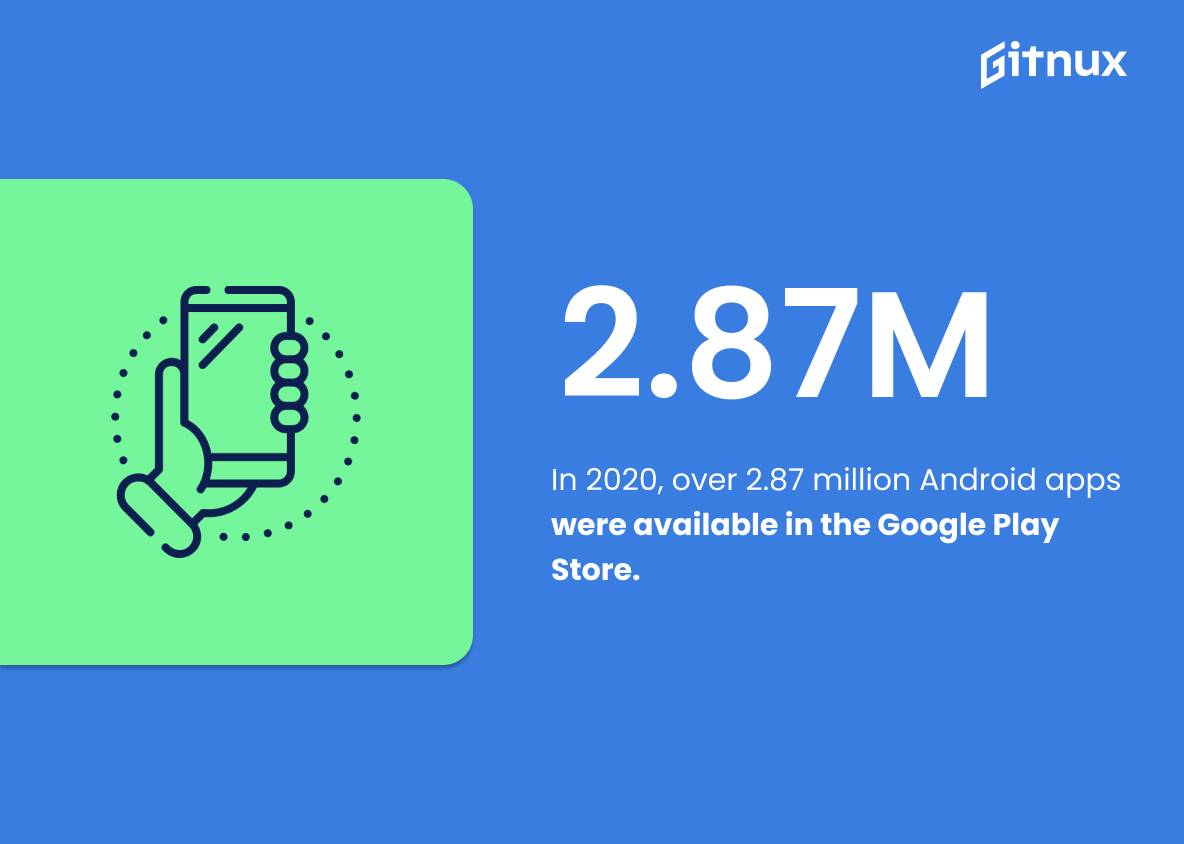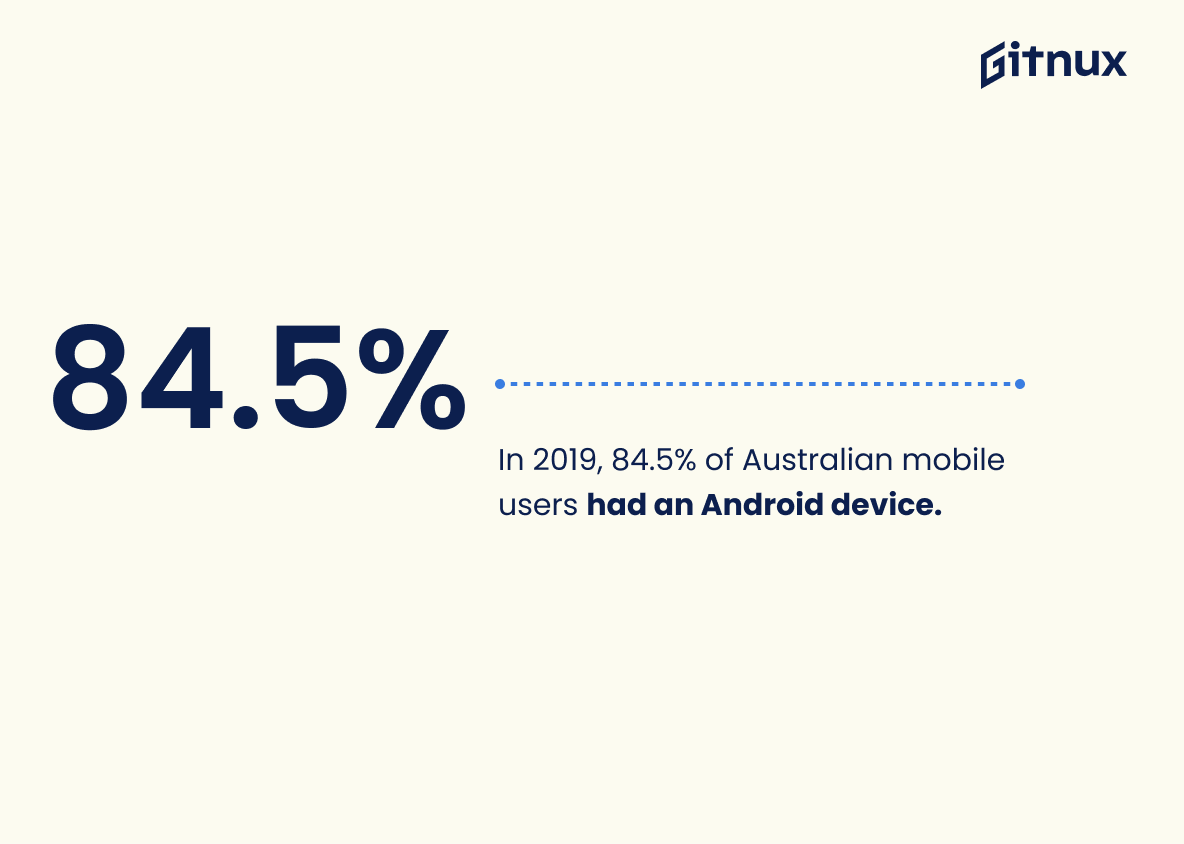Android usage statistics provide a comprehensive overview of the current state of Android devices and their users. As of 2021, over 74.13% of mobile devices worldwide run on the Android platform, with Samsung holding 31.19% market share among manufacturers in 2021 alone. India has the largest base of Android users with around 500 million people using these phones in 2020, while 99% malware was designed to target them that same year.
In 2019, 84.5% Australians had an Android device and Google Play Store’s revenue was $38 billion USD – up from prior years due to increased user engagement across all categories including communication (94%), entertainment (90%) and social media (87%). The average time spent per day on an android phone is 4 hours 30 minutes as well as having 90 apps installed at any given time; however battery life still remains relatively low at 10 hours 14 minutes for most models released in 2019-2020 period..
The latest version available is ‘Android 10’ which accounted for 41 percent global smartphone use by August 2021; meanwhile Apple iOS held 52 percent market share within US borders during this same period but only 43 percent amongst Chinese consumers who preferred Androids instead by 56%. Finally it should be noted that March 2021 saw 5 % active android devices affected by WebView bug yet despite such issues prices remain competitively low averaging out at $247 USD per unit sold throughout 2020-2021 fiscal year so far..
This statistic is a powerful indicator of the prevalence of Android devices in the world today. It demonstrates the sheer dominance of the Android operating system in the mobile device market, and serves as a reminder of the importance of Android in the modern world. It is an essential piece of information for anyone looking to understand the current state of Android usage and its impact on the global population.
In 2027, the number of Android smartphone users is projected to reach 1.75 billion.
This statistic is a powerful indicator of the immense potential of Android smartphones. It shows that the Android platform is continuing to grow in popularity and is likely to remain a dominant force in the mobile market for years to come. This is an important point to consider when discussing Android usage statistics, as it demonstrates the platform’s staying power and its potential to reach a large audience.
Android Usage Statistics Overview
Samsung holds the largest market share (31.19%) among Android smartphone manufacturers in 2021.
This statistic is a testament to Samsung’s dominance in the Android smartphone market. It highlights the company’s success in providing quality products and services that have enabled them to capture the largest share of the market. This information is important for any blog post about Android usage statistics, as it provides a clear indication of the current market leader and the level of competition in the industry.
India has the largest base of Android users with around 500 million users in the country.
This statistic is a testament to the immense popularity of Android in India. It highlights the fact that Android is the go-to platform for millions of users in the country, making it an important factor to consider when discussing Android usage statistics.
In 2019, over 99% of malware was designed to target Android devices.
This statistic is a stark reminder of the importance of taking security measures when using Android devices. It highlights the need for users to be aware of the potential risks associated with using Android devices and to take steps to protect themselves from malicious software. It also serves as a warning to developers to ensure that their apps are secure and up-to-date with the latest security patches.
Android 10 was launched in 2019 and was the most widely used Android version, accounting for 41.2% of Android smartphones worldwide in August 2021.
This statistic is a testament to the success of Android 10, demonstrating its widespread adoption since its launch in 2019. It highlights the fact that Android 10 is the most popular version of Android, with a significant 41.2% of Android smartphones worldwide using it in August 2021. This is an important statistic to consider when discussing Android usage statistics, as it shows the current state of the Android market.
In 2021, the average selling price of an Android smartphone was $247.
This statistic is a telling indicator of the affordability of Android smartphones, which is an important factor in the usage of Android devices. It shows that Android devices are accessible to a wide range of consumers, making them a popular choice for those looking for a budget-friendly option. This affordability is likely a major factor in the high usage of Android devices, and is an important point to consider when discussing Android usage statistics.
In 2020, over 2.87 million Android apps were available in the Google Play Store.
This statistic is a testament to the sheer magnitude of the Android platform. It highlights the sheer number of apps available to users, demonstrating the immense potential of the Android platform. It also speaks to the popularity of Android, as developers are creating more and more apps to meet the needs of the ever-growing user base. This statistic is a powerful indicator of the success of Android and its usage statistics.
In the United States, 47.9% of smartphone users had Android devices, compared to 52.1% using Apple iOS devices in 2021.
This statistic is a telling indication of the current state of the smartphone market in the United States. It reveals that Android devices are the more popular choice among smartphone users, with nearly half of them opting for the Android platform. This data is essential for any blog post about Android usage statistics, as it provides a snapshot of the current landscape and helps to inform readers of the current trends.
In 2019, 84.5% of Australian mobile users had an Android device.
This statistic is a powerful indicator of the prevalence of Android devices in Australia. It shows that the majority of mobile users in the country have chosen to use Android devices, making it the most popular mobile operating system in the country. This information is essential for any blog post about Android usage statistics, as it provides a clear picture of the current state of Android usage in Australia.
In 2020, Google Play Store’s revenue was around $38.6 billion, up 31.3% compared to 2019.
This statistic is a testament to the immense success of the Google Play Store in 2020. It shows that Android usage has grown significantly over the past year, with a 31.3% increase in revenue compared to 2019. This is a clear indication that Android is becoming increasingly popular and is being used by more and more people around the world. This is an important statistic to consider when discussing Android usage statistics, as it shows the potential of the platform and its growing popularity.
In October 2021, the most popular Android app category in the United States was communication, with 94.12% user engagement.
This statistic is a powerful indicator of the current trends in Android usage in the United States. It shows that communication apps are the most popular among Android users, with an impressive 94.12% user engagement. This data can be used to inform decisions about which types of apps to develop and market, as well as to understand the preferences of Android users in the US.
In 2021, nearly 95% of mobile applications in the Google Play Store were free to download.
This statistic is a telling indication of the prevalence of Android usage. It shows that the majority of users are taking advantage of the free apps available on the Google Play Store, suggesting that Android is a popular choice for mobile users. This is further evidence that Android is a major player in the mobile market, and that its usage is growing.
In 2019, the average battery life of an Android phone was around 10 hours and 14 minutes.
This statistic is a crucial indicator of the convenience and reliability of Android phones. It speaks to the amount of time users can expect to go between charges, allowing them to stay connected and productive for longer. This is especially important for those who rely on their phones for work or other important tasks. As such, this statistic is an important part of understanding the overall usage of Android phones.
The Android platform captured 86.6% of the global smartphone market in 2020, down from 87.0% in 2019.
This statistic is a telling indication of the current state of the Android platform in the global smartphone market. It shows that while Android still dominates the market, its share has decreased slightly from 2019 to 2020. This is an important insight for anyone interested in the Android platform and its usage statistics, as it provides a glimpse into the current trends in the industry.
In June 2021, 70.93% of European mobile users were using Android devices.
This statistic is a powerful indicator of the prevalence of Android devices among European mobile users. It demonstrates that Android is the dominant platform in the region, and that it is likely to remain so in the foreseeable future. This is an important point to consider when discussing Android usage statistics in a blog post, as it provides a clear picture of the current state of the market.
Conclusion
The statistics presented in this blog post demonstrate the immense popularity of Android devices worldwide. As of 2021, over 74.13% of mobile devices run on the Android platform and it is projected that by 2027 there will be 1.75 billion users globally. Samsung holds a large market share among manufacturers with 31.19%, while India has the largest base of users at 500 million people in 2020 alone. Additionally, 99% malware was designed to target Android phones in 2019 and 41.2% were running version 10 as recently as August 2021 – making it one of the most widely used versions currently available today. The average selling price for an Android smartphone was $247 last year, but despite its prevalence across multiple countries such as China (56%), United States (47%) and Australia (84%), Google Play Store’s revenue increased significantly from 2019 to 2020 ($38 billion). Furthermore, communication apps had 94 user engagement rate amongst US consumers during October 2021; 95% applications are free-to-download; 4 hours per day spent using them on average; 90 installed apps per device; battery life lasting up to 10 hours 14 minutes – all these figures point towards how popular this operating system really is.
References
0. – https://www.techspot.com
1. – https://www.idc.com
2. – https://www.counterpointresearch.com
3. – https://www.tomsguide.com
4. – https://www.cnbc.com
5. – https://www.statista.com
6. – https://www.resources.infosecinstitute.com
7. – https://www.gs.statcounter.com
ZipDo, cited June 2023: Android Usage Statistics















